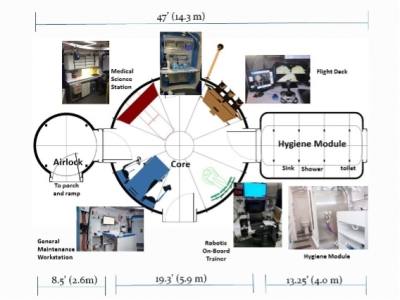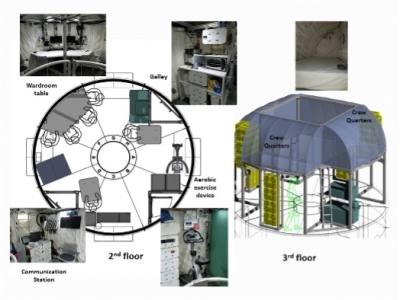As part of that effort, NASA launched its newest Human Exploration Research Analog, or HERA, mission Jan. 26. The mission, which will last for 45 days, will see four astronauts go into a habitat at the Johnson Space Center and simulate space missions and tasks.
What you need to know
The mission is the first of four in HERA’s seventh campaign that will take place throughout 2024, said Sara Whiting, deputy element scientist for spaceflight analogs at NASA. It will simulate going to Mars—a trip that could take several months—but will be on a compressed timeline.
For the test, four astronauts will live in the 650-square-foot habitat, where they will work through challenges and complete various tasks that go along with such a trip, Whiting said. They will “return” to earth, or leave the habitat, on March 11.
Overall, the mission will include 18 separate studies, according to a January news release from NASA, some of which are in partnership with other space agencies:
- 11 are through NASA to study social dynamics.
- Six studies are through the Mohammed Bin Rashid Space Centre out of the United Arab Emirates, which focus on psychological and physiological effects from the mission.
- One is through the European Space Station, which focuses on mindfulness.
Diving in deeper
In addition to studying the effects the mission could have on the astronauts, those chosen will also be completing various tasks throughout the mission, Whiting said.
Those include things such as going through an airlock and onto the Mars surface, where the astronauts will don virtual reality headsets, Whiting said. They will simulate various geological activities and ship repairs. Team dynamics will also be a focal point.
One of the larger challenges the agency is trying to address is the communications delay that comes with traveling to the red planet. Those delays could take up to 20 minutes one-way, Whiting said.
“They’re simulating up to five minutes,” Whiting said. “After about five minutes, it’s kind of just all broken. The worst effects are in those first five minutes.”
What else?
With this mission going on, as well as another one at NASA that is a year long and simulates what a base on Mars might look like, it’s “anybody’s guess” when humankind could take steps toward getting to Mars, Whiting said.
The Artemis program, which saw delays announced earlier this year, could be a pathway toward traveling to Mars, but nothing is concrete yet.
“NASA has a vision for it,” Whiting said. “But the agency ... is trying to answer those questions.”







